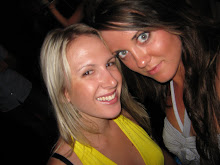





So this week from the above pictures, I guess you can tell I’m discussing digital cameras... Here’s what I have to say about some questions we were asked....
“A new technology is rarely superior to an old one in every feature”. Briefly discuss this statement in relation to digital camera technology. What would you consider to be some of the pluses and minuses digital camera technology holds in relation to more traditional film based cameras?
Here’s a time line I found that shows the development of cameras that I found really interesting ...
http://www.cartage.org.lb/en/themes/arts/photography/equiptechniq/photocam/development/develop.htm
Old cameras are not that of Polaroid’s but further back, right back to using glass plates and the image having to sit still for up to 20minutes. Cameras now are almost at the pint of being disposable. Although the cameras now show the image straight away, are clear and have the ability to go anywhere e.g. underwater, to the top of mountains, original cameras to me can be looked at as one of the most valuable resources that were ever invented, new cameras are just improvements. Without them, the ability to have timeless images of our past would not be possible.
Positives I see with digital cameras...
- You can see the image straight away
- They are sold at a range of prices that people can afford at almost any age.
- You can edit the photos eg change the colour, crop, enlarge just to name a few.
- Great resources for schools, offices, police and other areas of work.
- Can go anywhere, are portable and have a range of uses eg videos, pictures, can be used at night, underwater or at the top of a mountain.
Negatives I see ...
- Because they are cheap and mass produced they are more likely to break or be faulty.
- Do not have the original personality like the old cameras.
List some of the ways that digital images can be stored transferred and manipulated using other communications technology.
There are many places that images can be stored for example
-On the camera
-Hard drives
-Personal computers
-usbs
-cds
-Photo albums
-IPods
-Phones
Cameras come supplied with cables which allow easy transfers from the camera to a computer or printer. However, some cameras also have a memory chip that can be inserted directly into some computers and printers, which saves the hassle of carrying the cord with the camera at all times.
There are many programs that pictures can be edited in such as the programme high schools use in photography classes called photo shop. However, programs such as word, publisher and slideshow have the basic edit tools to manipulate pictures.
Given the prevalence of image capturing devices, and thinking about the issues discussed in tutorial one, consider what sort of ethical issues may arise with their use.
Taking cameras into some places such as public events, shows and concerts are band. If they are found there may be consequences as it breeches the copyright of the show.
Other things you commonly here about are people taking pictures in inappropriate places such as toilets and bathrooms this can be a huge issue and could end in jail time if caught.
People may also not appreciate their picture being taken, or know that a random person has their picture. This can be easy to do especially when in public places, so moving to the side or taking a picture when the background is clear is a good idea.
Not putting images up on websites with others in the background or with out peoples permission is also another thing that should be avoided.
Briefly discuss some of the ways that digital images could, or are, being used in occupational therapy practice (include reference and links to any web sites, or blogs you might come across)
Pictures can be used to help clients keep track of daily tasks, as a hobby for all patients, a way of using fine motor skills and opening patients to technology.
Some ways in which I experienced Cameras in OT practice was the labelling of equipment, taking pictures of people doing an activity to put in their file, or taking pictures of the correct way of doing an activity to give to the client for future reference.
Flickr.com
Flickr is a website which people are able to post up pictures and videos to share with others all over the world; they run on two main goals...
'We want to help people make their content available to the people who matter to them'
'We want to enable new ways of organizing photos and video'
Have a look at my flickr account: http://www.flickr.com/ in the search box type Victoria Simeon1
Digital and Optical zoom
'Optical zoom lenses physically extend to magnify your subject. A motor controls the lens movement'
'Digital zoom crops your image and magnifies the result of the cropping. This magnification process is called interpolation. To make the cropped area bigger, digital zoom makes up, or interpolates, pixels to add to the image, which may give less than satisfactory results'
http://www.kodak.com/eknec/PageQuerier.jhtml?pq-path=399&pq-locale=en_NZ&_requestid=10611
What is a megapixel?
'Digital cameras capture images as pixel elements, known as pixels. Simply put, a megapixel is equal to one million pixels. Digital images are made up of thousands of these tiny, tile-like picture elements. The more pixels, the higher the image resolution'
http://www.digicamhelp.com/camera-features/camera-parts/megapixels/
Hope you enjoyed the read...
Vic ;)

No comments:
Post a Comment